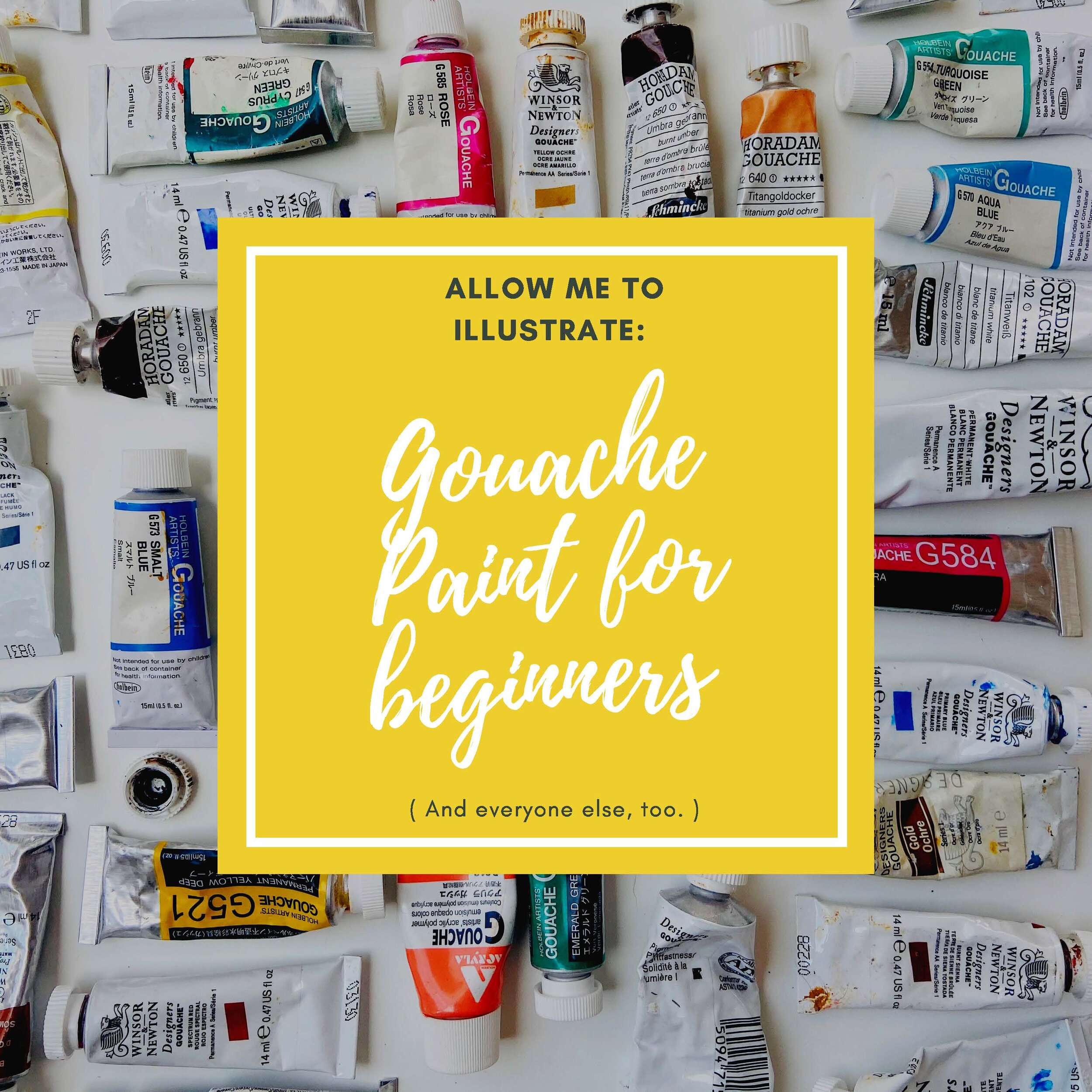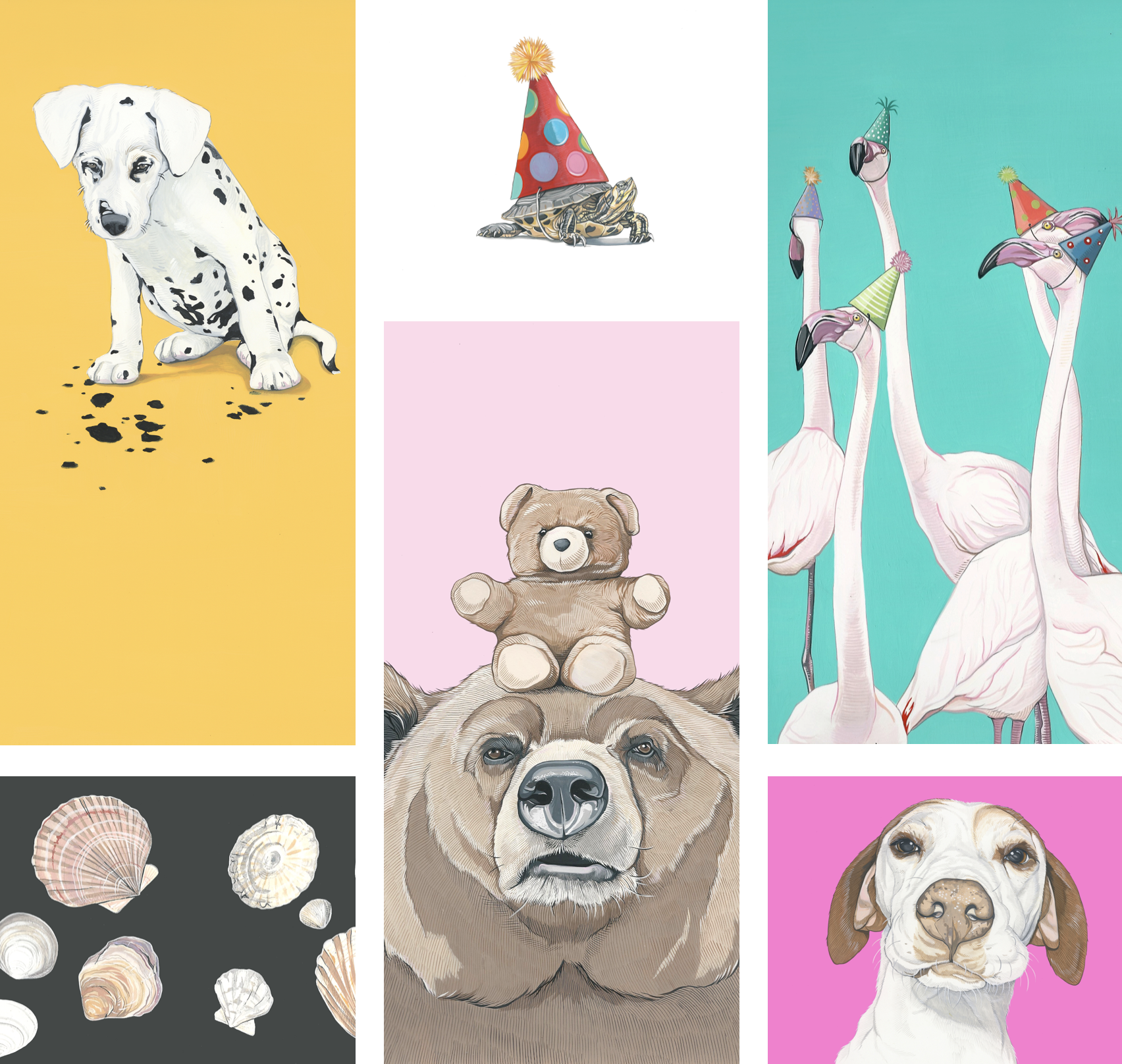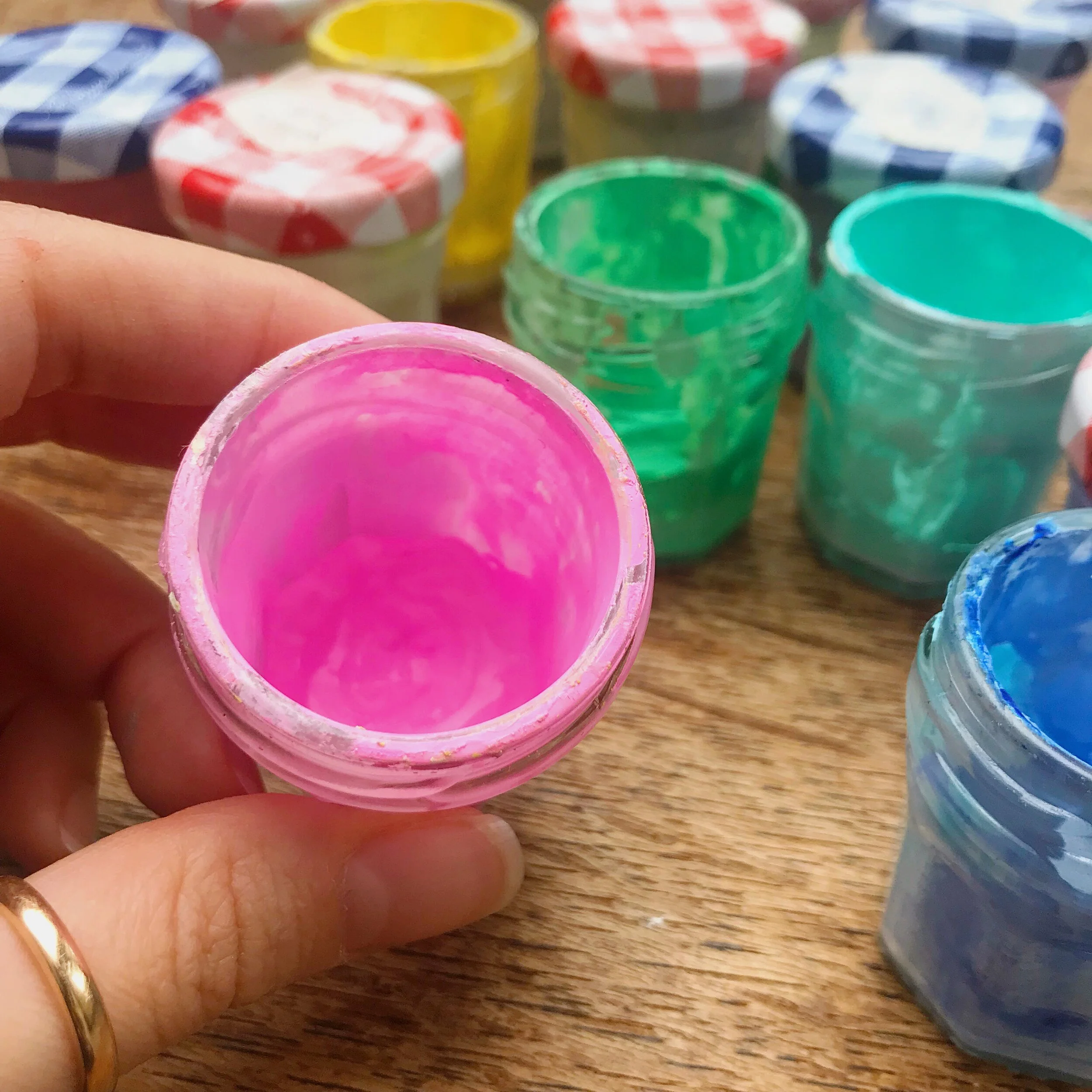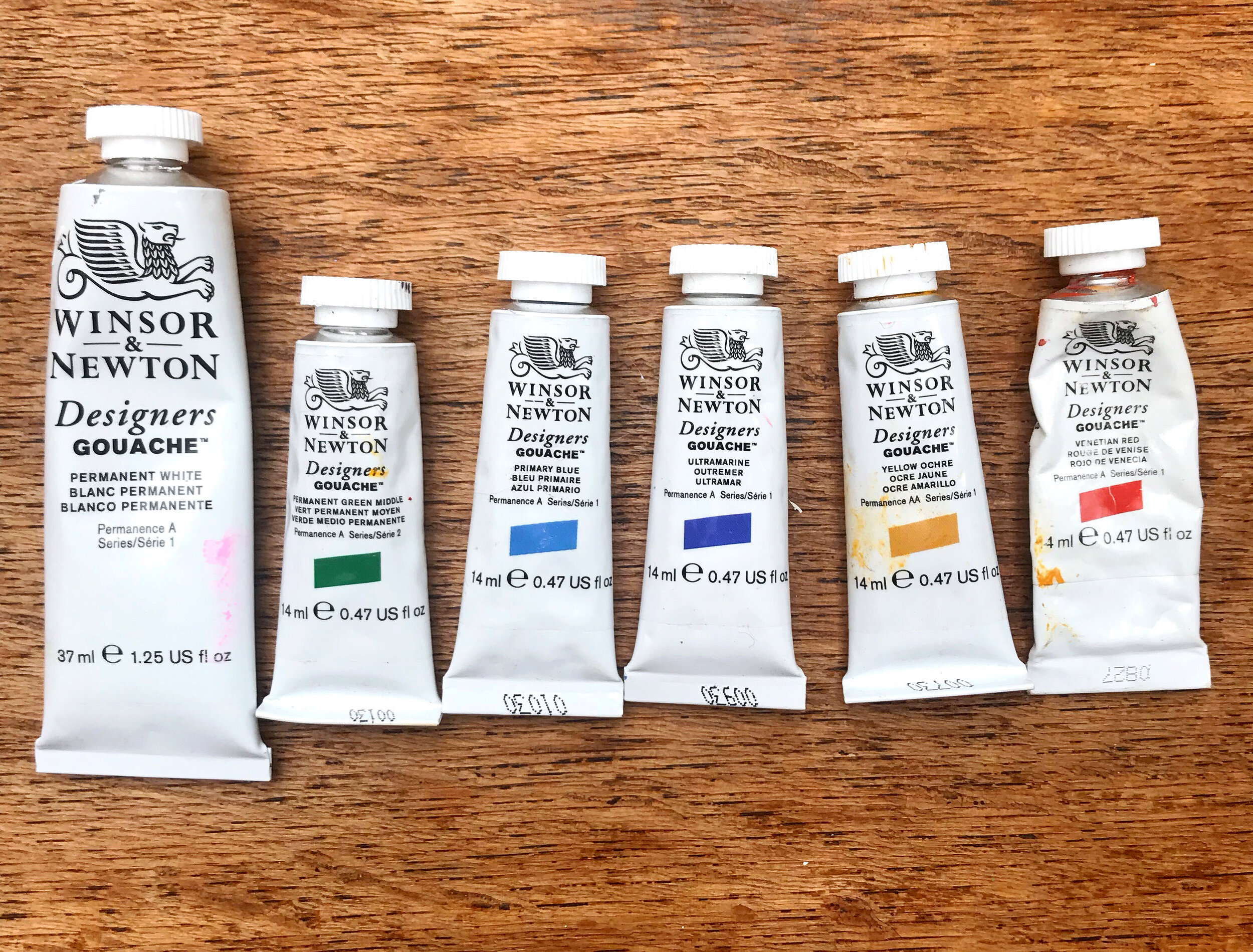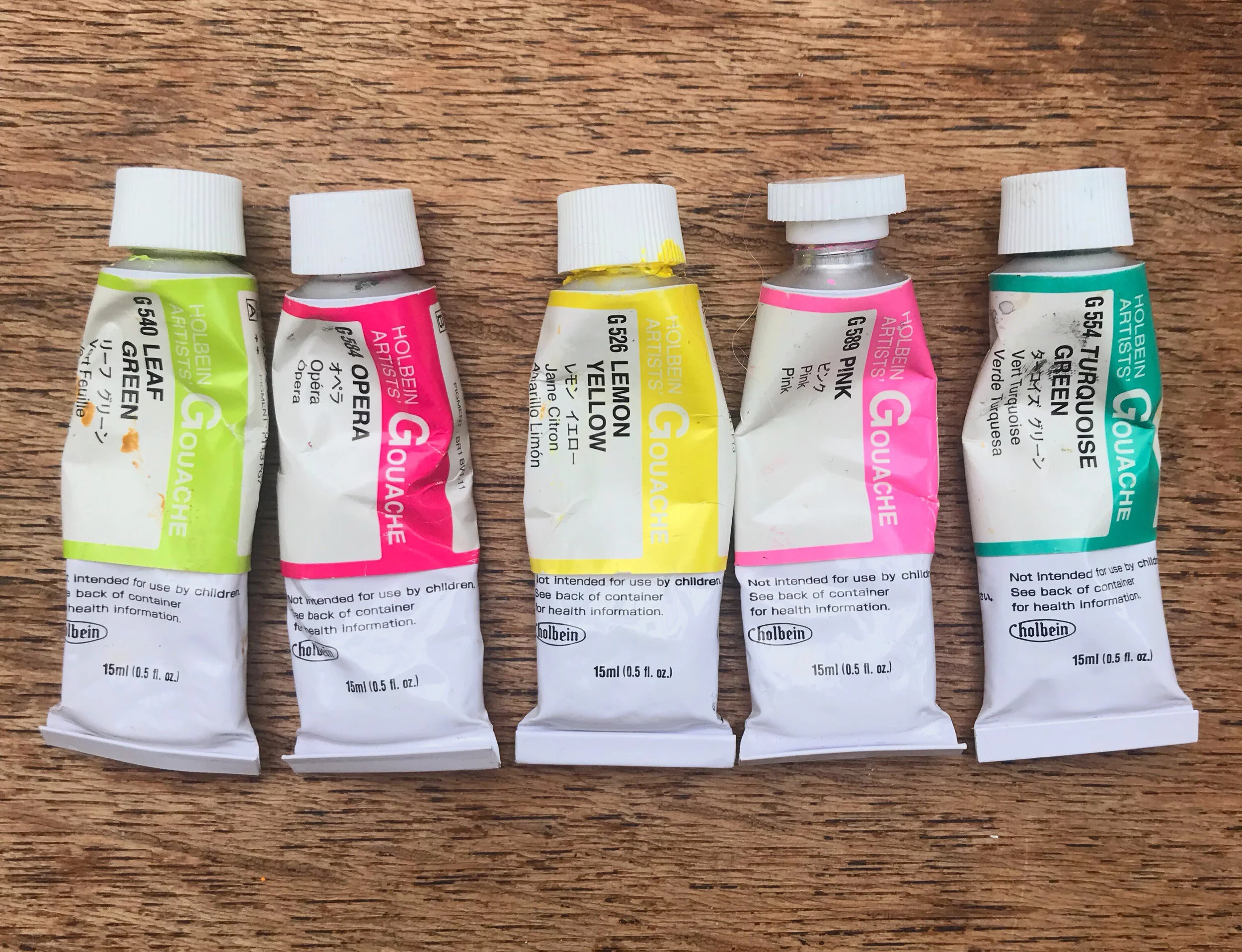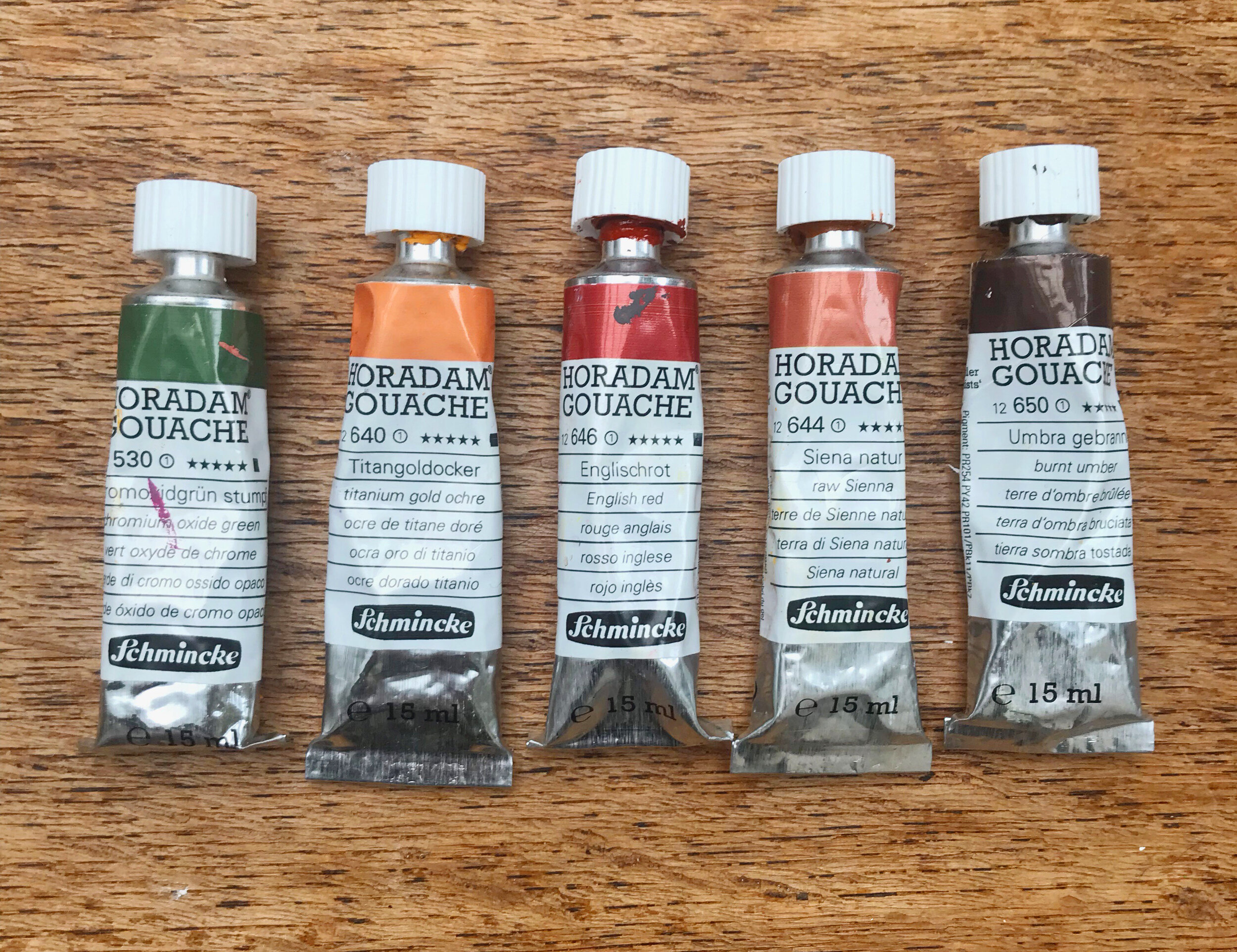After reading my first blog post 10 reasons to Try Gouache you might be ready to take the plunge and give it a go. Good choice! You won’t regret it.
If you’re still unsure about what gouache is or don’t know which paints to invest in, I’m here to help! I’m going to start by answering some frequently asked questions about gouache, and then share my favorite paint recommendations so that you can get started confidently.
What is gouache? And how the heck do you pronounce it?
Gouache is an opaque water-based paint that’s made of natural pigment, water, and a binding agent (usually gum arabic). Some gouache paints use chalk fillers to increase their opacity, usually at the expense of color saturation. The paint brands I’ll be focusing on (mostly) avoid this. They rely on heavy pigmentation to increase opacity, which means they’re a bit more expensive than student grade options. But I think the bold and vibrant colors are worth the cost!
Also, it’s pronounced goo-wash.
Look at you, speaking like a true artiste!
Gouache painting examples showing the type of saturated colors I’m talking about. These pinks? SWOON! And also notice how opaque the paints are. You absolutely cannot see the paper underneath.
Is gouache the same as watercolor?
Yes and no. The answer isn’t quite that simple.
If we were looking at this through the lens of a “paint family tree,” gouache and watercolor are cousins. They’re both water-based paints, which means that you can use the same paper, brushes, and clean-up methods for either. Both can be made transparent by adding more water, and they can also be reworked after they’ve dried.
So far, they sound like they’re the same, but thats where the likeness ends.
Watercolor is naturally transparent, but gouache is opaque, which means that you can’t see through it. The consistency of gouache paint is naturally thicker than watercolor. You can thin it out and use it as a wash, but overall it has more of an acrylic consistency than its water-based brethren.
Additionally, the makeup of gouache and watercolor are different. The pigment particles in gouache are bigger and closer together than the ones found in watercolor. The result? Light has a harder time getting through said particles and instead of drying transparent, it dries opaque.
Lastly, while watercolor generally dries lighter (dark and light colors included), gouache colors dry the opposite way you’d expect them to. Darker colors dry lighter and lighter colors dry darker.
How do I use gouache?
You can use gouache straight from the tube or mix it to create your own colors. I personally prefer to mix my own paints, and I’ve found that adding a little white can both amp up opacity and give colors a bit more depth. Because gouache pigment is naturally very saturated, adding a small amount of white doesn’t significantly dilute the color, and a little goes a long way! This is almost always true, except for a few volatile colors that are prone to being unstable. (I’m looking at you, red!) In those cases, I use Acryla gouache. Acryla is a gouache and acrylic hybrid, which means it dries matte like gouache, but won’t be workable once it dries thanks to its acrylic component.
What brushes/paper do I use with gouache?
You can use the same paintbrushes and paper you would use for watercolor. For gouache specifically, I prefer synthetic brushes to natural brushes because they hold less water. This gives you more control over your paint.
I’ve used gouache on hot-press and cold-press papers and I like both for different reasons. If you’re unsure about what to choose, understanding what you’ll get from each kind of paper might help you make a decision.
Hot press paper is smooth, making it ideal for fine lines and detail work. It also generally scans better.
Cold press paper is coarser. It’s a good choice when you want some texture to come through. It’s also generally easier to work with, especially if you’re just starting out.
Regardless of what type of paper you choose, make sure that it’s acid-free. This will prevent it from becoming yellow, brittle, or breaking down over time. You don’t want your paper to eventually destroy your masterpiece! And speaking of destroying, please do not roll your gouache paintings. It’s a recipe for disaster and you’ll instantly regret it.
I think paperweight is also worth considering. I prefer heavier paperweights, so aim for a minimum of 140 lb or above. 300 lb is my gold standard.
Examples of the types of brushes I normally use. I usually don’t invest in the most high quality of brushes because I’m very rough on their points. You can find brushes like these in the watercolor brush section at your local art store.
Can I use gouache with other mediums?
Yes! Gouache is like the capybara of paint… It gets along with everyone. It’s a perfect companion for its closely related cousin watercolor, but it can also be used with acrylic paint. Some artists mix acrylic and gouache together to make their gouache more permanent. If you do mix them, keep in mind that your gouache will no longer re-animate with water. If you’re not sure if you want to mix them yourself, you can buy pre-made Acryla gouache and see if you like how it handles.
You can also use gouache with things like pencil, pen and ink, charcoal, etc. The matte quality of gouache after it dries gives it a good amount of grit, which makes it a perfect medium to draw on. The possibilities are endless!
How do you store gouache paint?
I store my paint tubes in airtight containers similar to ones used for leftovers and keep them in a cool, dry place away from direct sunlight. Some people like to keep them in the refrigerator, and others keep them strewn across their art table. However you store them, always make sure to tightly seal their tops after use so they don’t accidentally dry out.
I store my mixed gouache colors in mini glass containers with lids. This keeps my mixes wet so I can continue to reuse them as I need to. To make it easy, I mix my paints right in the containers. If they do start to dry out, I add a bit of water to reconstitute the paint and prioritize using those colors before mixing any others. Some people also use pans with a damp cloth, reconstituting the paint when it dries out with a bit of water. Experiment to see what method works best for your needs!
Now that we’ve covered some of the more basic questions about using gouache, let’s get to the fun bit—the paint itself!
*For the purposes of full transparency, I’ve included affiliate links for each of my favorite products below. I do receive a tiny commission for items bought using the links, but you also receive 10% off if you’re a new Jackson’s customer. Win, win!
I use small repurposed jam jars like these to store my paints. They help my mixed colors stay wet, glass = less plastic, and its a great way to give a single use object another lease on life. Win, win, win!
These are my favorite paints to work with from least expensive to most.
Winsor & Newton Designer Gouache, from £5.50
Winsor & Newton have been producing gouache since 1935. They have 91 color options and their paint is widely used by designers and illustrators. They mostly rely on heavy pigmentation for opacity, but they occasionally use small amounts of filler in their formulas for colors that are naturally more transparent.
Some of their paints are single pigment (offering pure hues and cleaner colors) but others come premixed. In a lot of ways, this can be beneficial in terms of time management and color consistency! Common colors can be used directly from the tube without having to continuously experiment to get your basic hues right. It’s also a good way to prevent wasting paint. I personally think this is a great option for anyone regardless of experience. As I always say, best to work smarter and not harder!
I find their paint to be smooth, vibrant, and easy to work with. They don’t have as many fun color options as another one of my other favorite paint brands (see below) but I’ve never found that to be a big issue.
The larger sized tube of Winsor & Newton white gouache is SO handy. I always have a few on hand and I use it in all of my mixed colors to increase opacity.
Remember how I mentioned that Winsor & Newton didn’t have as many fun colors compared to another one of my other favorite brands? (Of course you do. It was literally a sentence ago.) I was specifically talking about Holbein.
Holbein’s line of gouache comprises 89 colors that make my heart stop. The best pinks, greens, blues, and yellows I’ve ever seen—you name it, they’ve got it. Holbein grinds their gouache a little more finely than other paint brands and they don’t add any whitening fillers to their paint. What you’re left with are bold saturated colors that are a dream to work with.
Their gouache is very opaque and a little goes a long way. I find that people beginning with gouache tend to overestimate how much paint they’ll use for a project and start with too much. My best advice? Less is more with these colors. Aim to start with small amounts and adjust as needed.
THESE COLORS THOUGH… HEART EYES X INFINITY.
Schmincke’s line of Horadam gouache has fewer options to choose from compared to the other two brands on this list (48 compared to 91 and 89, respectively) but the colors they do have are gorgeous. Again, they don’t contain any fillers and rely on heavy pigmentation to get the job done. Only 8 out of 48 are not single pigment. Impressive, right?
These are artist-grade paints of the highest quality. I’ve found that they’ve lasted me the longest of any brand without drying out. I’ve had mine for several years and they still look and act brand new. As they say, you get what you pay for!
You can tell these are more natural colors. That’s because with Schminke gouache, single pigment paint is king.
M Graham
To be honest, I haven’t used their paint before but I’ve heard amazing things about their gouache. I wanted to point them out as an option to look into. When I do eventually try them out, I’ll update this area!
—————
Thats it! That’s all the information I have for today. I hope you found it useful and I hope it helps you think about what type of gouache materials would serve you and your practice best.
Additionally, there are a lot of other brands of gouache to choose from but I’m only recommending quality brands I know of. Have you tried other great brands that weren’t listed here? If so, I would love to hear about them in the comment section!
x
Manda
